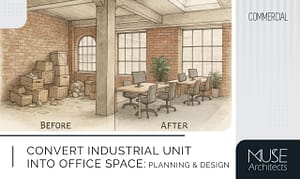As the coronavirus continues to spread, we find ourselves spending more time at home. Rooms that once served only a few waking hours now encompass our entire lives. Whether this change is temporary or not, it serves as a reminder of how crucial our homes are to our daily existence. During times of crisis, we typically seek environments that are comforting, safe, and dependable.
This situation will undoubtedly lead to a renewed appreciation for our domestic spaces, and people will value their homes more than ever before.
How the New Reality May Reshape Home Design
Here are our thoughts on rethinking home design architecture in light of this new reality:
Increased Focus on Sustainability and Self-Sufficiency
We will have a more informed understanding of how our homes function. There will be a push for increased efficiency and resilience, while reducing waste and dependence on external resources. As we become more aware of the unreliability of third parties in a changing economy, incorporating sustainable infrastructure at home will gain importance. This may lead to a shift towards autonomous living, including self-generating energy and growing our own food.
Emphasis on Health and Hygiene
Awareness of health will become paramount, with more focus on ensuring our homes contribute to our well-being. Features like HEPA filters and fresh-air intakes will likely become standard. Entry foyers or mudrooms may become essential for washing and disinfecting ourselves and our belongings before entering the home. Additionally, there will be a greater interest in spaces for exercise, meditation, and relaxation. Sunrooms may gain popularity in colder climates for natural daylight, while edible gardens will allow for greater control over food quality.
Balancing Public and Private Space
There is a delicate balance in designing spaces that cater to privacy and community. As we increasingly live, work, and learn at home, designs will need to accommodate diverse activities and occupants. Dedicated spaces for private activities like working or studying, as well as flexible multi-purpose areas, will become increasingly important.
The concepts of privacy, individual space, and the relationships between individuals, families, and neighbourhoods will be at the forefront of design considerations. Homes must be flexible enough to accommodate various activities while still providing enjoyment, regardless of their function.
Maximising Natural Daylight and Outdoor Connection
With most of our time spent indoors, maintaining a connection to the outdoors and access to natural light will be vital. Healthy interiors should incorporate natural light, ventilation, and outdoor connections—whether physical or visual. Increased daylighting and ventilation offer numerous benefits, including energy conservation, improved air quality, and enhanced well-being.
Creative Use of Space
Spending more time at home encourages creative utilisation of existing spaces. Converting an attic or finishing a basement can provide valuable areas for home offices, exercise rooms, or play areas. Making spaces more functional, efficient, and fluid will be key, as will finding uses for underutilised areas, such as storage under stairs. As we store more items, innovative storage solutions will be needed to maintain a clutter-free environment.
Final Thoughts
A home’s primary function is to provide shelter, but our expectations of it continue to grow. While the future of home design is uncertain, we know that focus will increasingly revolve around privacy, community, flexibility, efficiency, self-sufficiency, sustainability, wellness, and hygiene. This list will likely expand as homes become central to our lives.




